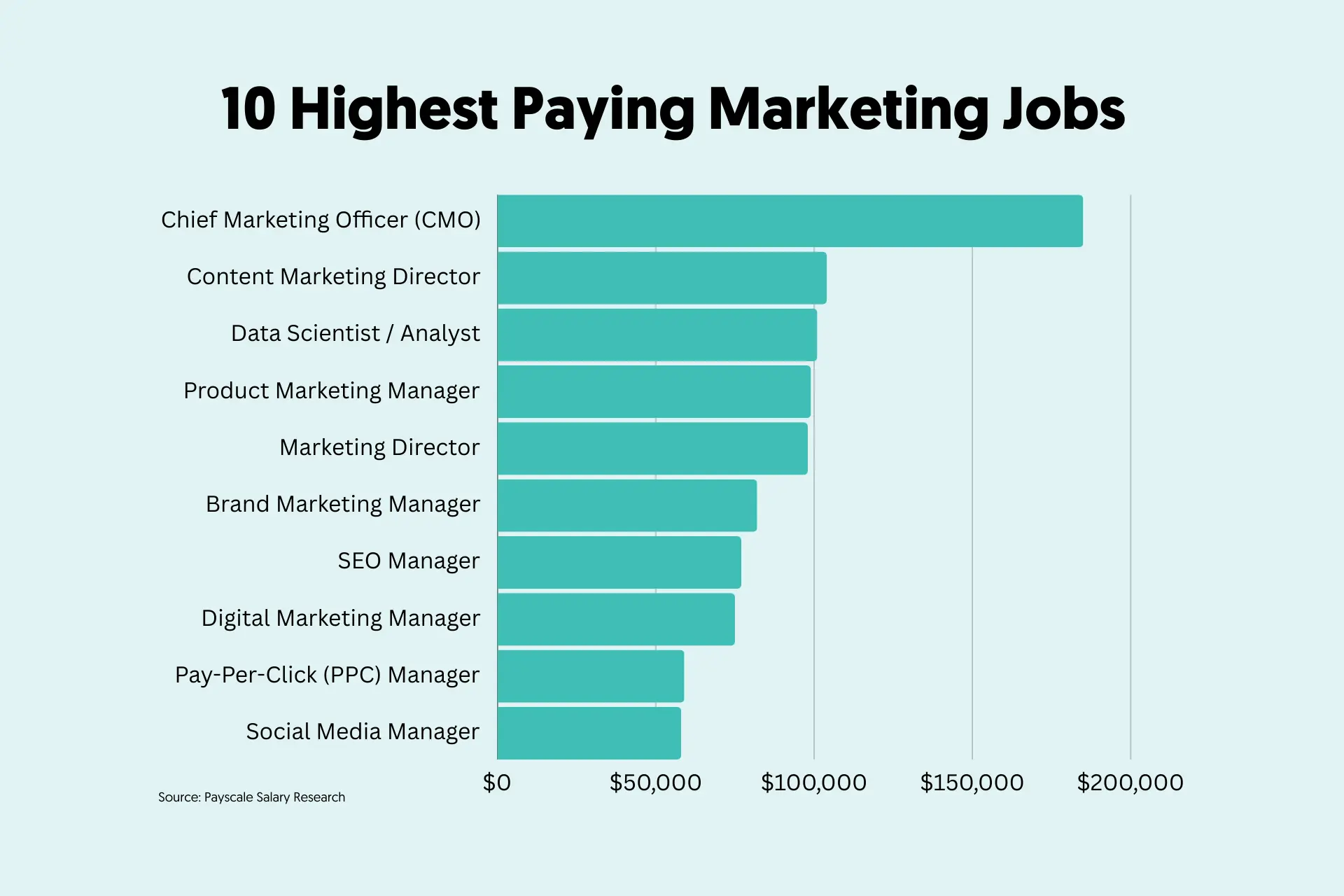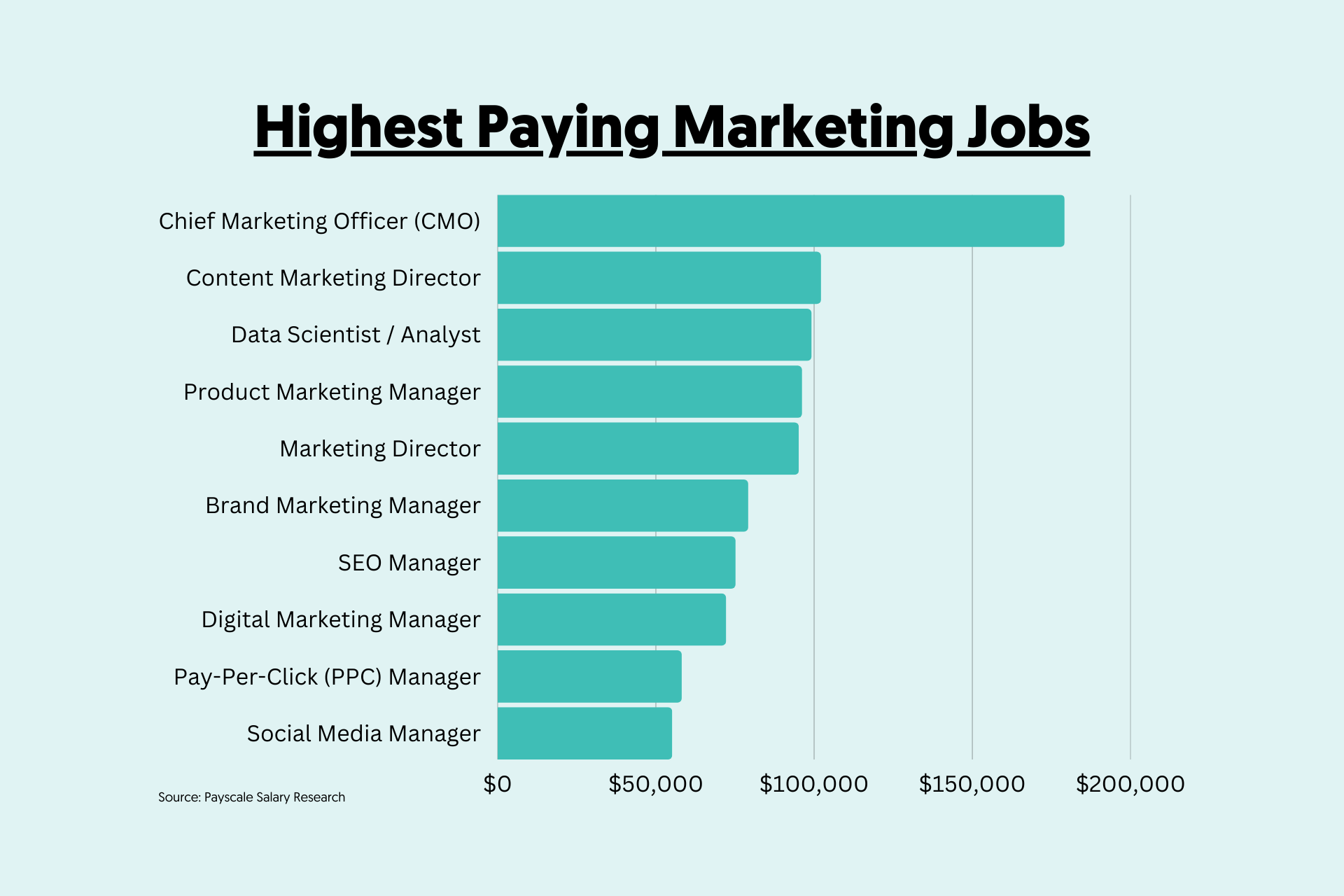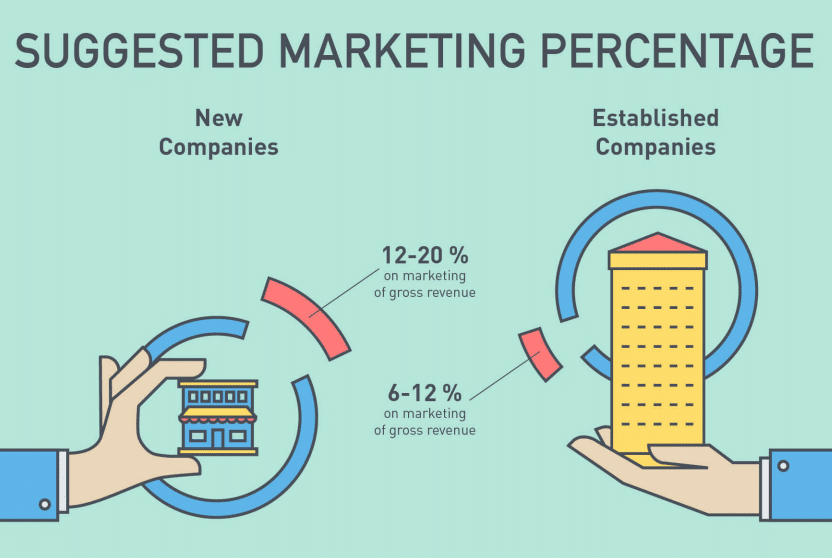In the ever-evolving world of marketing, identifying where the big money is being made has become a critical focus for businesses and professionals alike. From the rise of digital advertising to the explosive growth of influencer partnerships, the landscape is shifting rapidly. Companies are investing heavily in data-driven strategies, personalized customer experiences, and emerging technologies like artificial intelligence. Meanwhile, traditional channels are being reimagined to stay relevant. This article explores the key areas where significant revenue is being generated, highlighting the trends, tools, and tactics that are reshaping the industry and offering insights into where the next wave of opportunities lies.
Where's the Big Money Being Made in Marketing?
Marketing is a dynamic field where significant revenue is generated through various channels and strategies. The big money in marketing is often tied to digital transformation, data-driven decision-making, and innovative advertising techniques. Below, we explore the key areas where marketers are capitalizing on lucrative opportunities.
See Also Email Marketing Platform Recommendation That Is Similar to Mailchimp?
Email Marketing Platform Recommendation That Is Similar to Mailchimp?1. Digital Advertising and Paid Media
Digital advertising, including pay-per-click (PPC) campaigns, social media ads, and programmatic advertising, is one of the most profitable areas in marketing. Companies are investing heavily in platforms like Google Ads, Facebook, and Instagram to reach targeted audiences. The ability to track ROI in real-time makes this a preferred choice for businesses.
| Platform | Revenue Potential |
|---|---|
| Google Ads | High ROI for search and display ads |
| Facebook Ads | Effective for targeted audience engagement |
| Programmatic Advertising | Automated ad buying with precise targeting |
2. Content Marketing and SEO
Content marketing and search engine optimization (SEO) are critical for driving organic traffic and building brand authority. Companies that invest in high-quality content and optimize their websites for search engines often see long-term financial benefits. Blogging, video content, and infographics are popular formats.
See Also What are some direct-to-consumer brands that you admire and why?
What are some direct-to-consumer brands that you admire and why?| Content Type | Impact on Revenue |
|---|---|
| Blogging | Increases organic traffic and lead generation |
| Video Content | Boosts engagement and conversion rates |
| Infographics | Enhances shareability and brand visibility |
3. Influencer Marketing
Influencer marketing has become a billion-dollar industry, with brands partnering with social media influencers to promote their products. Micro-influencers and macro-influencers are both valuable, depending on the campaign goals. This strategy leverages the trust and engagement influencers have with their followers.
| Influencer Type | Revenue Potential |
|---|---|
| Micro-Influencers | High engagement rates for niche markets |
| Macro-Influencers | Broad reach for mass-market campaigns |
4. Email Marketing
Despite being one of the oldest digital marketing strategies, email marketing continues to deliver impressive ROI. Personalized email campaigns, automation, and segmentation are key to its success. Businesses use email marketing for lead nurturing, customer retention, and upselling.
See Also Marketing My Friend's Meal Prep Business.
Marketing My Friend's Meal Prep Business.| Email Strategy | Revenue Impact |
|---|---|
| Personalized Campaigns | Higher open and click-through rates |
| Automation | Efficient lead nurturing and conversion |
| Segmentation | Improved targeting and customer retention |
5. E-commerce and Affiliate Marketing
The rise of e-commerce has created massive opportunities in affiliate marketing. Brands collaborate with affiliates to drive sales, paying them a commission for each successful referral. Platforms like Amazon Associates and Shopify have made it easier for marketers to monetize their efforts.
| Platform | Revenue Potential |
|---|---|
| Amazon Associates | High earnings for product referrals |
| Shopify Affiliates | Lucrative commissions for e-commerce referrals |
Where does marketing make the most money?

 Community-led growth: A case study of Notion
Community-led growth: A case study of NotionDigital Marketing: The Highest Revenue Generator
Digital marketing is one of the most lucrative areas in the marketing industry. It encompasses a wide range of strategies, including search engine optimization (SEO), pay-per-click (PPC) advertising, and social media marketing. Companies invest heavily in digital marketing because it offers measurable results and a high return on investment (ROI).
- SEO: Optimizing websites to rank higher in search engine results, driving organic traffic.
- PPC: Paid advertising where businesses pay each time a user clicks on their ad.
- Social Media Marketing: Leveraging platforms like Facebook, Instagram, and LinkedIn to reach target audiences.
E-commerce Marketing: Driving Online Sales
E-commerce marketing focuses on promoting products and services sold online. With the rise of online shopping, businesses are investing heavily in strategies like email marketing, influencer partnerships, and retargeting campaigns to boost sales and customer retention.
See Also How Facebook Ads Actually Work.
How Facebook Ads Actually Work.- Email Marketing: Sending personalized emails to nurture leads and encourage repeat purchases.
- Influencer Partnerships: Collaborating with influencers to promote products to their followers.
- Retargeting Campaigns: Re-engaging users who previously visited the website but did not make a purchase.
Content marketing is a powerful tool for building brand authority and trust. By creating valuable and relevant content, businesses can attract and engage their target audience. This includes blogging, video marketing, and infographics.
- Blogging: Publishing articles that provide value to readers and improve SEO rankings.
- Video Marketing: Using videos to explain products, share testimonials, or provide tutorials.
- Infographics: Visual representations of data or information that are easy to understand and share.
Affiliate Marketing: Performance-Based Earnings
Affiliate marketing is a performance-based strategy where businesses pay affiliates for driving traffic or sales. This model is cost-effective and scalable, making it a popular choice for companies looking to expand their reach without upfront costs.
- Commission-Based Earnings: Affiliates earn a percentage of sales they generate.
- Cost-Per-Lead (CPL): Affiliates are paid for generating leads, regardless of whether a sale is made.
- Scalability: Businesses can work with multiple affiliates to reach a broader audience.
Influencer marketing has become a dominant force in the marketing world. By partnering with social media influencers, brands can tap into their large and engaged followings. This strategy is particularly effective for reaching younger demographics and niche markets.
- Authenticity: Influencers often have a loyal following that trusts their recommendations.
- Targeted Reach: Brands can choose influencers whose audience aligns with their target market.
- High Engagement: Influencer posts typically generate higher engagement rates compared to traditional ads.
Is there a lot of money to be made in marketing?

How Lucrative is a Career in Marketing?
A career in marketing can be highly lucrative, depending on the industry, role, and level of expertise. Marketing professionals, especially those in digital marketing, data analytics, and brand management, often command high salaries. For example:
- Entry-level positions such as marketing coordinators or social media managers can earn between $40,000 and $60,000 annually.
- Mid-level roles like marketing managers or digital marketing specialists can earn between $70,000 and $100,000 per year.
- Senior-level positions such as Chief Marketing Officers (CMOs) or marketing directors can earn upwards of $150,000 to $300,000 annually, with bonuses and stock options.
What Factors Influence Earnings in Marketing?
Several factors determine how much money can be made in marketing. These include:
- Industry: High-demand industries like technology, finance, and healthcare often pay more for marketing expertise.
- Geographic location: Salaries in major cities like New York, San Francisco, or London are typically higher due to the cost of living and demand for skilled professionals.
- Specialization: Niche areas like SEO, PPC advertising, and content strategy often command higher salaries due to their technical nature.
Is Freelance Marketing a Profitable Option?
Freelance marketing can be a profitable career path for those with the right skills and network. Freelancers have the flexibility to set their rates and choose their clients. Key points include:
- Hourly rates: Freelance marketers can charge anywhere from $50 to $200 per hour, depending on their expertise and the complexity of the project.
- Project-based earnings: Completing large-scale campaigns or long-term contracts can result in significant income.
- Overhead costs: Freelancers must account for expenses like software, marketing tools, and taxes, which can impact net earnings.
How Does Digital Marketing Compare to Traditional Marketing in Terms of Earnings?
Digital marketing often offers higher earning potential compared to traditional marketing due to its scalability and measurable results. Key differences include:
- Demand: Digital marketing skills like social media management, email marketing, and data analysis are in high demand.
- ROI: Companies are willing to pay more for digital marketing strategies that deliver measurable returns on investment.
- Global reach: Digital marketers can work with clients worldwide, increasing their earning potential.
What Are the Highest-Paying Marketing Roles?
Certain marketing roles offer significantly higher salaries due to their strategic importance and required expertise. These include:
- Chief Marketing Officer (CMO): Responsible for overseeing all marketing efforts, CMOs often earn six-figure salaries with bonuses and stock options.
- Data-Driven Marketing Roles: Positions like marketing data analysts or customer insights managers are highly valued for their ability to interpret data and drive decisions.
- Specialized Consultants: Experts in areas like growth hacking or brand strategy can charge premium rates for their services.
Which marketing is best for earning money?

Digital Marketing: The Modern Goldmine
Digital marketing is one of the most effective strategies for earning money in today's world. It leverages online platforms to reach a global audience, making it cost-effective and scalable. Here are some key reasons why it stands out:
- Wide Reach: Digital marketing allows businesses to target audiences worldwide, breaking geographical barriers.
- Cost-Effective: Compared to traditional marketing, digital campaigns often require lower budgets with higher ROI potential.
- Measurable Results: Tools like Google Analytics provide real-time data to track campaign performance and optimize strategies.
Affiliate Marketing: Earn While You Promote
Affiliate marketing is a performance-based strategy where you earn commissions by promoting other companies' products or services. It’s ideal for individuals and businesses looking to monetize their online presence. Key advantages include:
- Passive Income: Once set up, affiliate links can generate income with minimal ongoing effort.
- Low Startup Costs: You don’t need to create your own product; simply promote existing ones.
- Flexibility: You can work from anywhere and choose products that align with your niche or audience.
Content Marketing: Build Trust and Revenue
Content marketing focuses on creating valuable, relevant content to attract and engage a target audience. Over time, this builds trust and drives profitable customer actions. Here’s why it works:
- Long-Term Value: High-quality content continues to attract traffic and generate leads long after it’s published.
- SEO Benefits: Optimized content improves search engine rankings, increasing organic traffic.
- Brand Authority: Consistently providing valuable content establishes your brand as an industry leader.
Email Marketing: Direct and Personal
Email marketing remains a powerful tool for earning money by directly engaging with your audience. It’s highly customizable and offers excellent ROI. Key benefits include:
- High Conversion Rates: Personalized emails have higher open and click-through rates, leading to more sales.
- Automation: Tools like Mailchimp allow you to automate campaigns, saving time and effort.
- Customer Retention: Regular communication keeps your brand top-of-mind, encouraging repeat purchases.
Social media marketing leverages platforms like Facebook, Instagram, and LinkedIn to connect with audiences and drive sales. It’s particularly effective for building brand loyalty. Here’s why it’s a top choice:
- Targeted Advertising: Social media platforms offer advanced targeting options to reach specific demographics.
- Engagement: Interactive content like polls, stories, and live videos fosters deeper connections with your audience.
- Viral Potential: Shareable content can quickly reach a massive audience, amplifying your reach and revenue potential.
Why is so much money spent on marketing?

The Role of Marketing in Business Growth
Marketing is essential for business growth because it helps companies reach their target audience and build brand awareness. By investing in marketing, businesses can:
- Increase visibility: Effective marketing ensures that a brand stands out in a crowded marketplace.
- Generate leads: Marketing campaigns attract potential customers, turning them into leads.
- Drive sales: Well-executed marketing strategies convert leads into paying customers, boosting revenue.
Building Brand Loyalty Through Marketing
Marketing plays a crucial role in fostering brand loyalty, which is vital for long-term success. Companies spend heavily on marketing to:
- Create emotional connections: Consistent messaging and storytelling help customers relate to the brand.
- Encourage repeat purchases: Loyal customers are more likely to return, reducing the cost of acquiring new ones.
- Enhance customer trust: Transparent and authentic marketing builds trust, which strengthens loyalty.
Competing in a Saturated Market
In highly competitive industries, marketing is a necessity to stay relevant. Businesses allocate significant budgets to:
- Differentiate from competitors: Unique selling propositions (USPs) are highlighted through marketing.
- Capture market share: Aggressive marketing campaigns help businesses gain a larger portion of the market.
- Adapt to trends: Marketing allows companies to stay updated with consumer preferences and industry trends.
The Impact of Digital Marketing
Digital marketing has revolutionized how businesses connect with consumers, leading to increased spending. Key reasons include:
- Cost-effectiveness: Digital platforms often provide better ROI compared to traditional methods.
- Targeted advertising: Data-driven strategies allow businesses to reach specific demographics.
- Real-time analytics: Companies can measure campaign performance and adjust strategies instantly.
Marketing as an Investment, Not an Expense
Businesses view marketing as an investment because it drives long-term profitability. This perspective is supported by:
- Revenue growth: Effective marketing directly contributes to increased sales and profits.
- Brand equity: Strong marketing builds a brand’s value over time.
- Market expansion: Marketing enables businesses to enter new markets and diversify their customer base.
Frequently Asked Questions from Our Community
What industries are currently generating the most revenue in marketing?
Digital marketing is one of the most lucrative sectors, with industries like e-commerce, technology, and healthcare leading the way. E-commerce companies, in particular, are investing heavily in social media advertising, search engine optimization (SEO), and influencer partnerships to drive sales. The technology sector is also thriving, with companies focusing on data-driven marketing strategies and AI-powered tools to enhance customer engagement. Meanwhile, healthcare marketing is growing rapidly due to increased demand for telemedicine and health-related products.
How does content marketing contribute to big earnings in the marketing industry?
Content marketing is a cornerstone of modern marketing strategies, as it helps businesses build brand authority and establish trust with their audience. Companies that invest in high-quality blog posts, videos, and social media content often see significant returns on investment (ROI). For example, businesses that consistently produce valuable content can attract more organic traffic, reduce customer acquisition costs, and increase conversion rates. Additionally, content marketing supports other strategies like SEO and email marketing, making it a critical component of revenue generation.
Why is influencer marketing considered a high-revenue area in marketing?
Influencer marketing has become a powerful tool for brands to reach targeted audiences and drive sales. By partnering with influencers who have a strong social media presence, companies can tap into their followers' trust and loyalty. This strategy is particularly effective in industries like fashion, beauty, and fitness, where consumers heavily rely on recommendations. The high ROI of influencer marketing stems from its ability to generate authentic engagement, increase brand visibility, and create viral campaigns that amplify reach and revenue.
What role does data analytics play in maximizing marketing revenue?
Data analytics is essential for identifying profitable opportunities and optimizing marketing campaigns. By analyzing customer behavior, market trends, and campaign performance, businesses can make informed decisions that maximize ROI. Tools like Google Analytics, CRM systems, and AI-driven platforms enable marketers to track key performance indicators (KPIs), segment audiences, and personalize messaging. This data-driven approach not only improves targeting accuracy but also reduces wasted ad spend, ensuring that marketing budgets are used efficiently to generate significant revenue.
Leave a Reply


Articles of interest